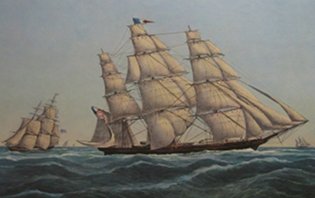A small island group near the coast of mainland China, Quemoy, gave us lessons that we need to remember in dealing with Iran. There cannot be an analogy between geographies, actors, and the times. But lessons can be insightful to current circumstances of the primacy of recognizing US interests, the difference between friends and foes, and acting accordingly or failing through dithering and fecklessness.
Few remember the history shaping role in the 1950s of Quemoy.
The defense of Quemoy by Nationalist forces against an invasion from newly Communist China in 1949 effectively stymied mainland China’s objective to take Taiwan and, in the face of world defeatism, demonstrated that the Asian march of communism could be defeated.
The same mistaken line drawn by the Truman Administration placed South Korea and the Taiwan Straits outside the US containment perimeter. This encouraged the Soviet and Chinese support of North Korea’s invasion of the South in 1950.
Preoccupied in Korea, and following an inclination toward stalemate being enough for containment, the US 7th Fleet patrolled the Taiwan Strait to prevent either Communist China or Chang Kai-shek’s rump in Taiwan from attacking the other.
In 1953, President Eisenhower, though believing Quemoy to be indefensible and believing the French position in IndoChina would not hold, allowed Taiwan to heavily reinforce Quemoy, raising the threat level to distract and deter China.
In 1954, however, the Chinese, not to appear deterred, unleashed thousands of artillery strikes upon Quemoy, took another small island over 200 miles north of Taiwan, and skirmishing occurred along and on China’s coast.
In 1955, the US Senate ratified a mutual defense treaty with Taiwan. Secretary of State Dulles, then President Eisenhower a day later, to defend Taiwan publicly declared that the US would seriously consider using tactical nuclear weapons on China, as the US Chief of Naval Operations stated “to destroy Red China’s military potential.”
Mainland China’s bombardments ceased.
This US firmness also furthered the fracture between China and the Soviet Union, weakening the threats to the US’ worldwide interests, as the Chinese felt the Soviet Union was an unreliable ally.
By 1957, China was again encouraged by the Soviet Union acquiring significant nuclear capabilities, feeling that checkmated the US. At the same time, China felt that Khruschev’s statement that nuclear war was unwinnable was contradicted by the Chinese leaders’ willingness to sacrifice even half its population to still emerge with hundreds of millions of surviving Chinese. The zeal for the Great Leap Forward in 1958, to quickly industrialize China even at the cost of tens of millions of Chinese lives and, as it turned out, severely setting back China’s economy, was matched by renewed bombardments of Quemoy. Mao was showing his independence of Moscow. Khruschev rushed to Peking to alleviate its concerns, issuing a hollow threat to the US that the Soviet Union would defend China against a US invasion that all knew wasn’t contemplated.
The US provided supplies and arms to Taiwan, and Taiwan’s air force wiped the Red planes from the skies. Eisenhower made it clear that the US would not tolerate “armed aggression.” The mainland’s attacks halted.
China learned that it couldn’t rely on the Soviet Union, that it couldn’t pursue its own goals as long as it relied on the Soviet nuclear umbrella. The Soviet Union, unwilling to be dragged into war, unilaterally abrogated its pledge to supply China with nuclear weapons.
In 1960’s presidential campaign, Richard Nixon hammered John Kennedy for being weak on the defense of Quemoy, leading Kennedy in reaction to be more hawkish toward the closer communist threat from Cuba.
However, the two presidencies after Eisenhower’s acted contrary to the lessons they should have gained from his successes in holding the line.
Kennedy’s restrictions on the Bay of Pigs invasion doomed its difficult chances. Kennedy’s refusal to cut the North Vietnamese supply route through Laos encouraged Hanoi’s invasion of agents in the face of the South’s uprooting of Southern communists. The Kennedy administration’s involvement in the assassination of Diem unleashed the chaos that required half a million US troops to staunch the North’s advance. The 1964 Lyndon Johnson campaign refusal to strategically bring Hanoi to its knees only encouraged our foes.
The lessons of Quemoy are not about the discrete importance of small islands in a sea of hostility. What we learn from Quemoy is how US lack of or recognition of the global strategic import of such islands in a sea of hostility either encourage or deter our foes’ wider ambitions and lead to serious consequences deeply impacting our own and not just remote others’ security.
With US support, Taiwan became an economic powerhouse. Mainland China’s past geographic ambitions were too costly to itself and are gone, its current ones are economic, and it relies upon Taiwan as source for much of that. The credibility of US words was matched by US leadership and actions. US casualties were not necessary, as Taiwan provided its own fighting determination and prowess.
Israel, similarly, has emerged as an economic and military powerhouse, with much to offer to its MidEast neighbors. However, Iran sees little credibility in our words, leadership or actions. Until it does, we will continue to hover nearer to dangerous global strategic consequences.

